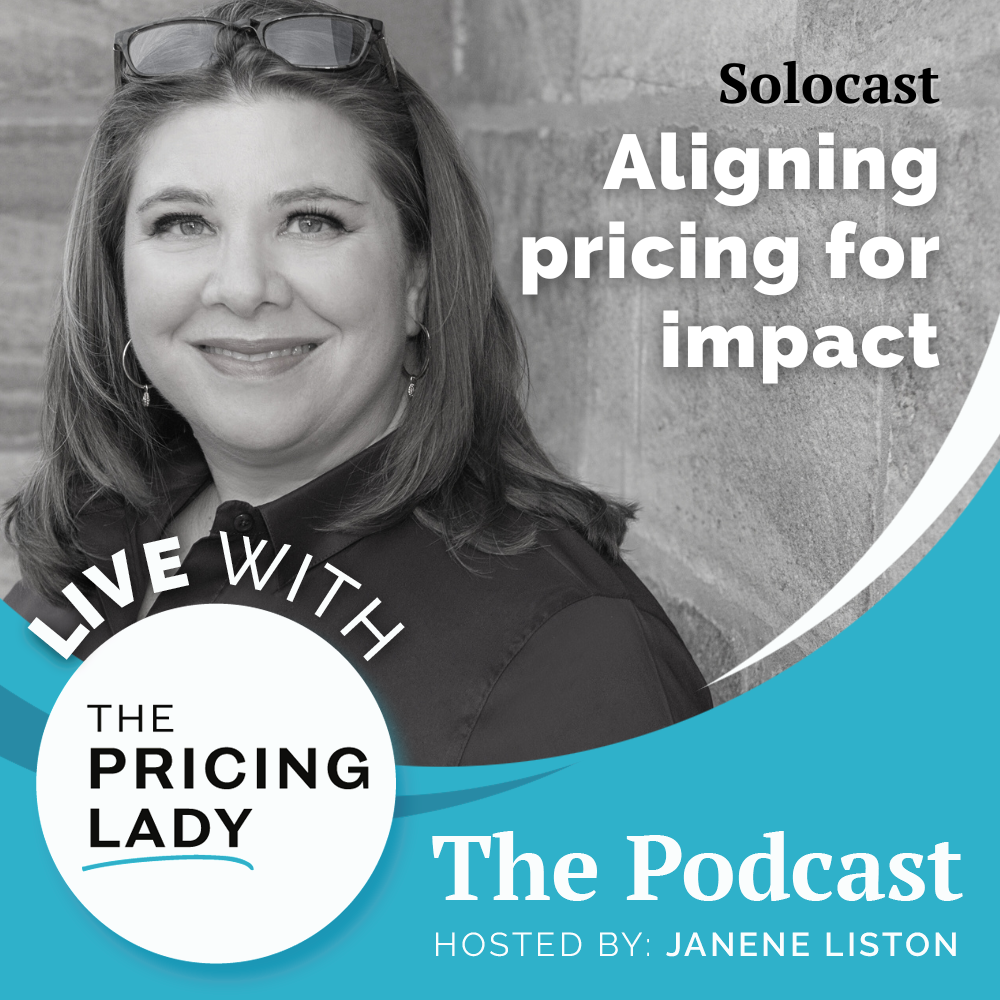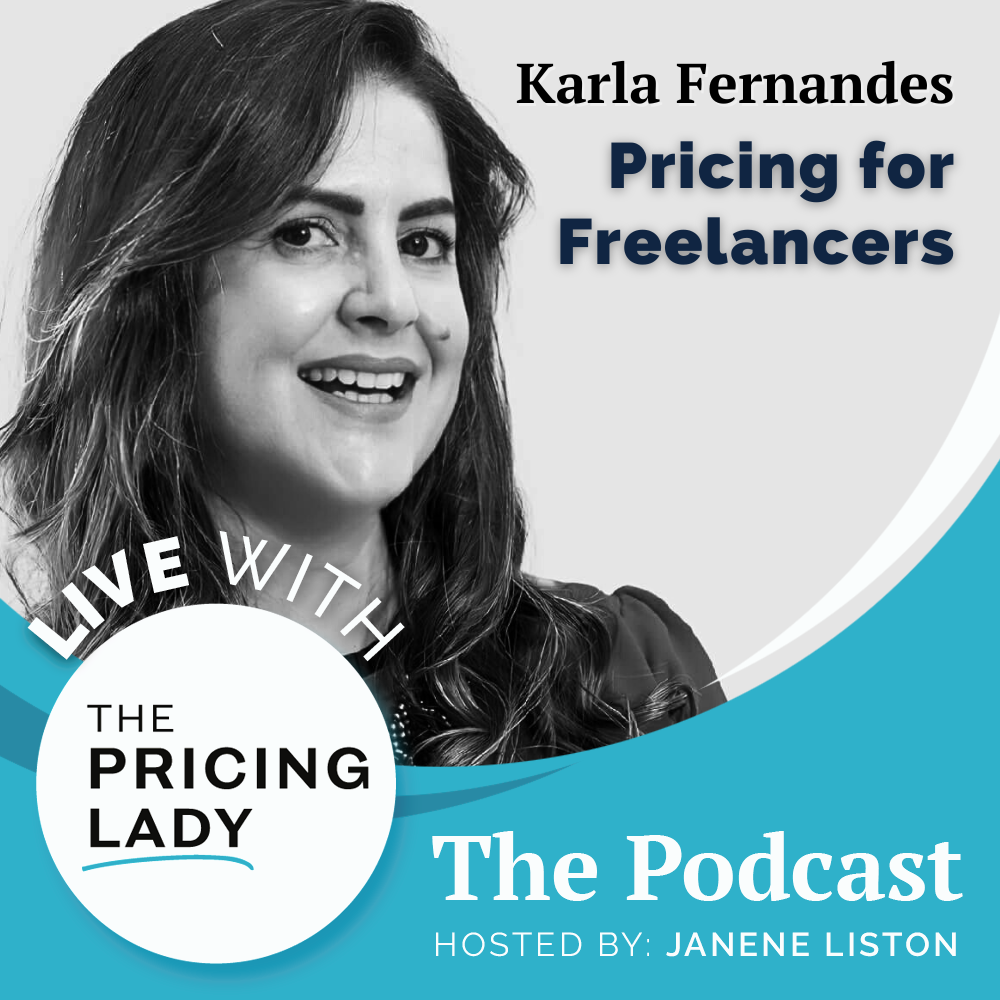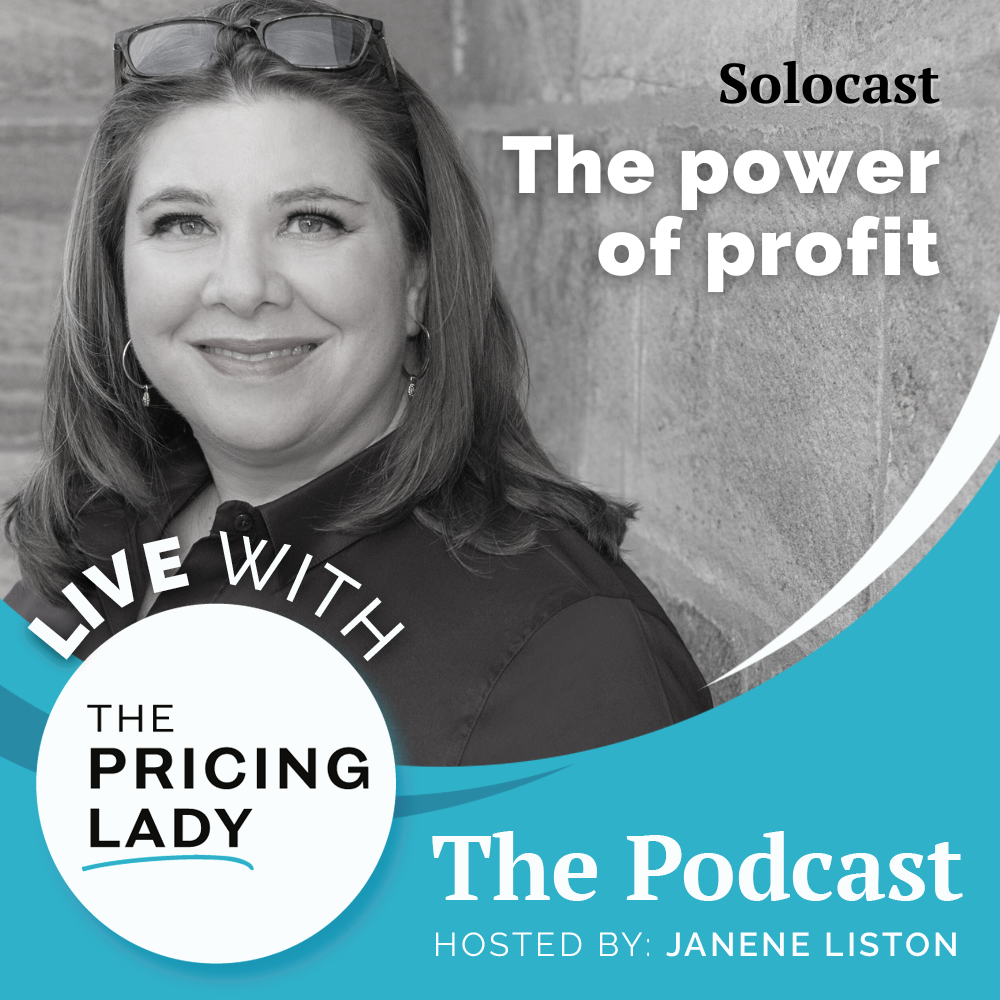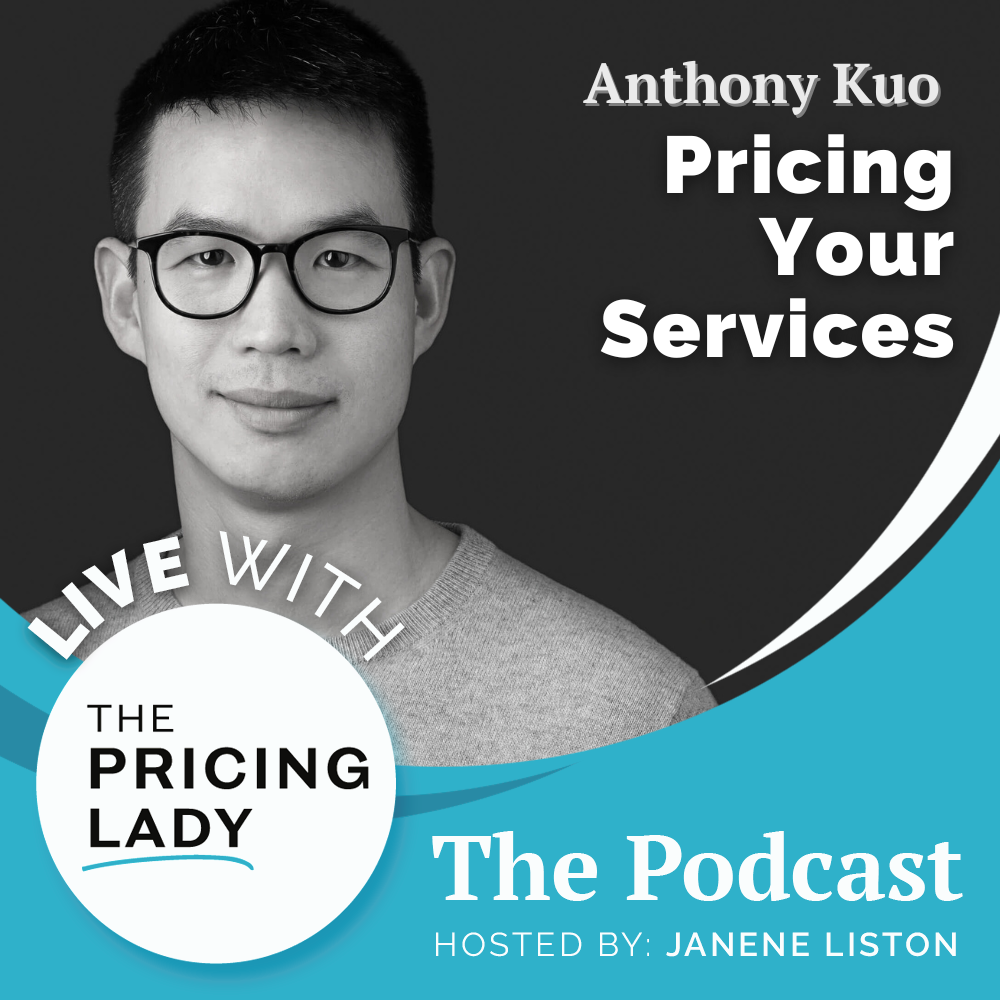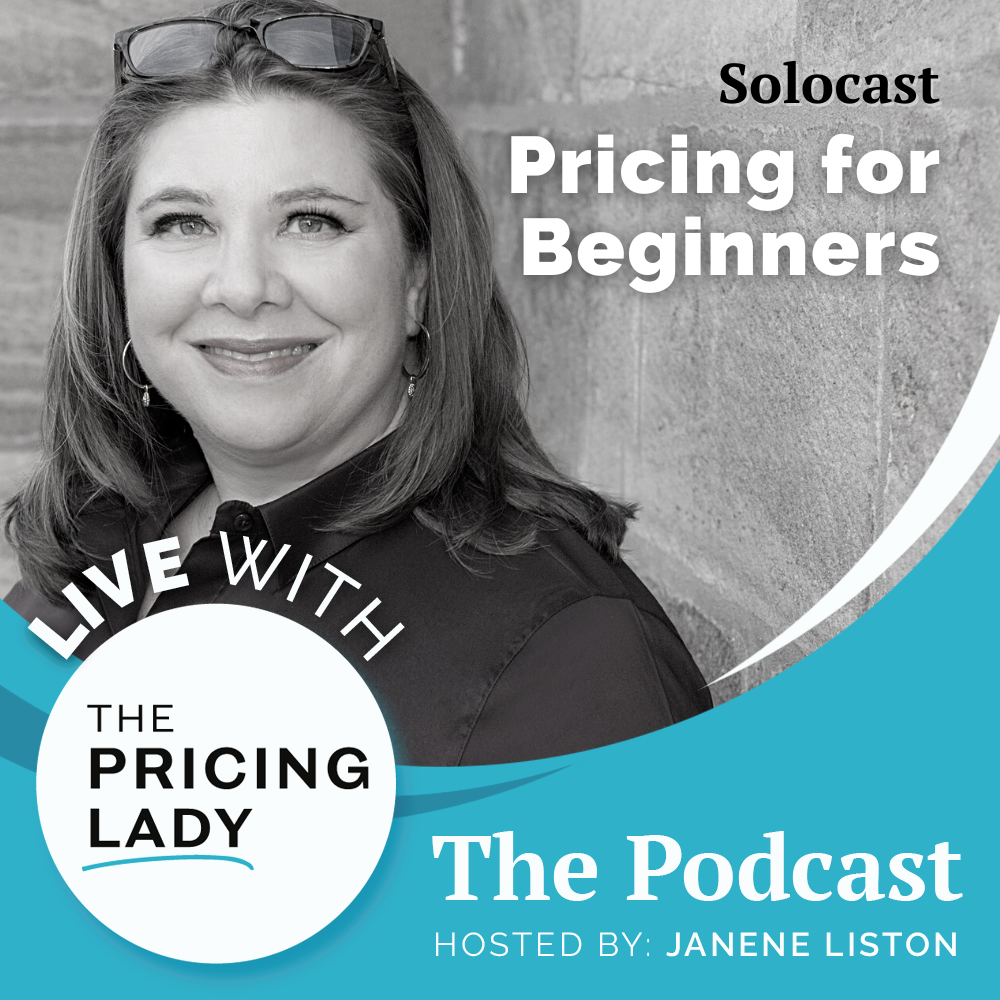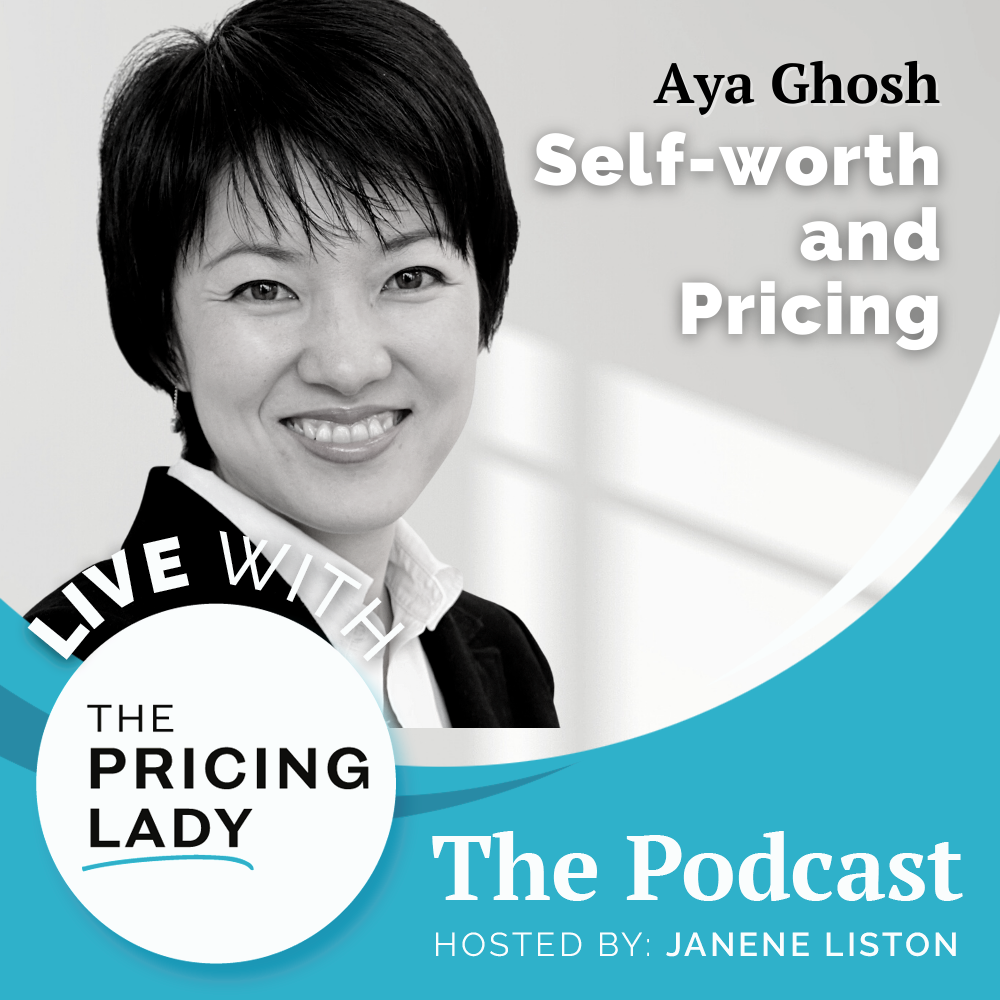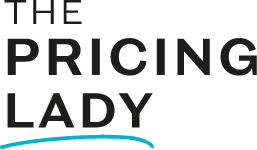Understanding value is the key to unlocking pricing and profits. Some aren’t sure how to “calculate” value, others struggle to communicate it, others don’t understand profit and some struggle with a combination. What I do know for a fact is that the more you learn and understand the value, the more you realize it’s everywhere. Even more, you start to see how to use value better in all aspects of your business.
Crowdfunding campaigns are no exception. When you put together the packages people can “buy” or the offers for sponsors of your crowdfunding campaign – you have to think of value. And that’s what this week’s guest, in part has come to share with us.
In This Episode
I recently sat down with Margit Takacs, Change and Culture consultant, trainer and coach. She shares with us her own pricing journey. From being in the corporate world to venturing out on her own to her experience crowdfunding the writing and publishing of her newest book.
In the past, I’ve support people in putting together their crowdfunding packages. In many ways it’s the same as offer building and pricing in any other context. But as Margit shares with us there’s an added element of value to consider. I loved this conversation and if you’re running your own campaign or if you’ve thought of publishing your own book you’ll definitely want to learn from her experience.
Enjoy the episode!
Podcast Episode Highlights
- 0:00 Intro
- 1:49 Getting to Know Margit
- 4:10 The Value of Working with Margit
- 7:48 What Led Margit to Start Her Own Business
- 10:06 Pricing at the Beginning
- 12:11 From Funding to Publishing
- 22:39 Calculating Goals and Investments
- 25:33 Unveiling the Marketing Puzzle
- 30:04 Wrapping It Up
Favorite Quotes
“What was important to me is to have a price that would make me feel good about what I’ve done.” Margit
“…choose the price. Go with it. See if the client wants to work with you. AND see how you feel about it afterwards. ” Margit
“People find it (pricing) difficult when they’re guessing or when they’re blindly doing what someone else told them to do. It’s hard to feel confidence about your price when you don’t know why THAT price.” Janene
“Crowdfunding for your book is more about the mindset you have about the pricing, your business and the quality you give than the actual money.” Margit

“It’s sometimes just putting into perspective and asking ourselves, how much do we value a service, a regular service you take? And what would we like our customers to value our service like?” Margit
Episode Links
Reach out to Margit:
LinkedIn: https://www.linkedin.com/in/margittakacs/
Facebook: https://www.facebook.com/margit.takacs.12/
Margit’s Book Recommendation: The Way We’re Working Isn’t Working
The Fair Price Formula: Next cohort starts soon. Join me, Janene, and learn how to set prices for your business.
Rate, Review and Follow the Show on Apple Podcasts
“I’ve just found my Pricing Resource!” … “A binge worthy podcast.” … “I learned so much about how to improve my profitability.”
If that sounds like you, please consider rating and reviewing the pricing podcast. It helps me spread the word to more people and ultimately get more small businesses on the path to sustainable profitability and business success. Click right here, tap to rate with five stars, then select “Write a Review.” Last let me know what you loved most about the episode!
If you don’t already, follow my pricing podcast. New episodes come out every couple of weeks, plus bonus episode. If you’re not following there’s a good chance you’ll miss something. And last, listen to more episodes there are more than 130 episodes to choose from from setting prices to executing them to changing them you’ll find answers to many of your pricing questions.
Reach Out, Connect and Book a Call with Janene
Linkedin | YouTube | Facebook | Email List
Get started improving your business. Beyond this pricing podcast there’s more for you to explore. Sometimes it’s difficult to know where to begin. I suggest you Download the the self assessment Pricing Scorecard to get a view of what’s working and not in your business. Also if you’ve ever wondered “What’s a fair price?” then check out my on-demand webinar “Getting to A Fair Price”. Two great places to get started with pricing in your business today.
Get in touch with Janene, your Business Strategist & Pricing Expert. If you’ve got a business question that needs answering, a pricing challenge you’re facing or you have suggestions for future topics or guests, let me know. Your questions and insights often become episodes. Share yours with me and let’s see where it goes. Contact Janene.
Listen up! Don’t miss out. There’s a lot going on and you’ll want to be in the know. Follow my YouTube channel (rate it too please) so you don’t miss an episode of Live with The Pricing Lady or join my Email List.
Transform your business and life. My mission is to help you build a sustainably profitable business. One where you can confidently charge for the value you deliver. Curious about my coaching and consulting offers, check them out. Let’s see how we can work together. Book a complimentary Call today!
Episode Transcript
Why don’t we go ahead and start with a few rapid-fire questions. Where are you joining me today?
Margit: I am in Geneva, Switzerland, just around the lake. Beautiful, sunny day. I can’t wait to go out with my family and enjoy a bit of a stroll right there.
Janene: Yeah. Geneva. Yes. It’s so beautiful in Switzerland right now. Pretty much everywhere.
It’s definitely as soon as June started, summer hit like boom.
Margit: Like every single day. Yes, we are over here.
Janene: Yeah. So, second question, what would you describe as your superpower?
Margit: My superpower, I’m probably a catalyst, I would say. There is no time to waste. I’m one of those people who just gets an idea and if it’s realistic, I’m gonna go for it.
I will make sure I am going to get what I like. And my favorite question to ask my friends, my family, and my clients is whatever issue challenge we are facing. What are we going to do about it? So it would be catalyst.
Janene: A catalyst. Excellent. What’s one interesting thing you’d like to share with us that most people don’t know about you?
Getting to Know Margit
Margit: I feel like I’m an open book. Those of you who are following me on social media, you probably have seen a lot of posts Telling about what I do and what kind of things I like professionally and personally. Something that people probably would not know is I played a piano and I started when I was at the age of 10, much later than other kids.
And the music school. But I had a great fun with it. And till today I like just playing a few tunes and I’m also playing my kitchen robot. I’m not sure how many of you are struggling with cooking the right meals in the evening for the family, but that’s a savior. And my kitchen robot is my new keyboard, I would say.
Janene: Excellent. Thank you for sharing. I mean, we’re all on, a lot of us are online like this and, you know, feel that people know us, but there’s always something that we’ve done in the past or something interesting that we tried once that most people don’t know about, which is why I like to ask that question.
So why don’t you do two things here. First, introduce us to yourself, and second, can you share with us what it is? What’s the value that people get out of working with you?
The Value of Working with Margit
Margit: I work today as a change and culture consultant and trainer and coach. I am running my own business. After having worked in the corporate world for over 15 years.
I had the chance to experience different fields within the corporate realm, and I truly clicked with the topic of human-centered change. That’s how I’ve decided to dedicate my energy, my time to what I’m passionate about, which is indeed the human side of resistance, how to help others overcome that.
Today I’m working with different clients across industries. Given my personal priorities and family priorities today at this life stage, I work mostly remotely with clients on how to strengthen their change approaches, how to build their capabilities, how to come up with a change roadmap that prevents part of the inevitable resistance.
Because it’s human to resist and it’s annoying too, but there are ways to overcome that. I see my role as someone who demystifies the topic and really makes it very pragmatic. In terms of the value I give to my clients, I would say it’s a lot to do with engaging them in the co-creation of a change plan.
I’ve learned my lessons from the past when I just came in as the expert in my field. Any fantastic roadmap would have been rejected simply because the power is really in co-creation. Given my background, having lived, and worked in seven countries having had transformation program experience in over 20 of them, I’ve got a global insight.
I really enjoy working with a multicultural setup. And whilst I admit I still have a lot to learn, I think that’s also a value that many of my clients appreciate.
The Power of Co-creation
Janene: You said co-creation is the key. What is it that people get out of that co-creation? Why is it so effective?
Margit: Very often I see that clients have got ideas. Oh my God. We’re doing a new change project, but people will not like it and it’s natural. I think we all go through that emotional curve of denying what’s coming, then resisting with all our forces and eventually exploring and accepting the new realities.
My clients often know it’s coming, and they already take steps to prevent what is to come, they try to communicate, they do good job with it, but still something is missing. When it comes to co-creation, I always take really a stock taking is the first step to see what they’ve already done, what has worked, and then I show them from other projects, programs that I’ve been involved in, what are the other good practices that we could bring in?
For me it’s super important that we agree on what is to come. I give them a myriad of options based on what I hear. What I think would culturally and organization and national culturally click with them, and then like a puzzle piece. We put that together. I do want them to be able to do this sustainably.
My clients always have a set of tools, techniques, and examples that they can copy with pride from next time they do. I guess that’s because for 15 years I was on the client side and as the customer myself, I didn’t want to depend always on externals. As a business owner, that’s my promise to my clients that I will help them, and I will let them have what can make a difference based on my experience and expertise.
What Led Margit to Start Her Own Business
Janene: What led you to start your business?
Margit: I admit, that was actually twofold. One was when in 2016, my mentor at the time gave me feedback as I was talking to him about something I did outside of my work, and I invited him along to these women in leadership program.
He said, did you realize that your eyes are sparkling as you speak. Have you ever thought about doing your own business? My immediate reaction was no. I love what I’m doing. My job is my ideal job, and I really appreciate my company too. He said, okay, I am just holding up a mirror.
You take it or leave it. Two years later when I was blessed with my first child, child and we also changed countries. I was like, okay, maybe the on the side hobby freelancing could become my own business. And as we moved to Switzerland, it’s a very different country and culture from the ones that I had the chance to live in and work in before.
I realized this could be my way forward. I decide how much I work, but I can also dedicate time to my much-weighted little off string. Eventually, number two also arrived. Then suddenly you are in a whole complex environment that I believe a lot of listeners also can relate to.
Conquering Fear
Margit: I was really looking for a balance, I wanted to professionally do what I’m passionate about, but also have time and proper time, quality time with the family. That kind of led me to want to run my own business. Something I had never done before, and I was really afraid of. I admit, I found it scary.
I grew up professionally in the corporate environment. They were always a boss, and I was best blessed with good bosses, a framework expert to reach out to, and suddenly I was on my own. But as the time went on, I got interesting client projects feedback. I looked for growth opportunities.
I started onboarding experts to help me with parts of the business. That was not my strength. I just realized that I love this more than I would have ever thought. So that’s how I got into running my own business.
Janene: Interesting. When you first started your business that first time you had to sit down and set a price for something. What was that like for you?
Pricing at the Beginning
Margit: Scary. Again, as a corporate employee, I never was asked this question. I didn’t know, and I started asking people around, so what’s your fee? What’s your fee? And eventually I came up with one, but I really had no reference point as I was an employee who always got the salary slip, and time to think about an increase.
What was important to me is to have a price that would make me feel good about what I’ve done. I didn’t really know. It’s not one of those questions where that you can put in today in ChatGPT or in Google what to be my price. But I think once I got, the first time I got paid on a freelance basis, I was still employed.
But I know my free time I did that. I just felt cathartic. Someone is paying me for something I love. This is amazing, but of course that was not a very conscientious decision making about pricing, but my experience with this is choose the price, go with it, see if the client wants you and wants to work with you, and see also how you feel about it afterwards.
Janene: Yeah. I think it’s important to feel some sense of alignment to the price. But I think what people find difficult is when they’re guessing at it or they’re just relying on, well, so and so told me to do it. It’s hard to feel confident about it. It’s hard to feel like that makes sense cuz you just don’t really know. So.
Margit: Cause you dunno what sense is. I absolutely can relate it. Yeah. Any part.
From Funding to Publishing
Janene: Yeah. No, it’s very interesting. Now you’ve done something recently that I thought was super interesting and one of the reasons I was set looking, so I’ve been looking forward to this interview for a long time is you wrote a book recently.
I’d like you to tell us, or share with us, what it was that you did in terms of how you came up with the money, for lack of a better word, to go through that process and share with us a bit more about what that was like.
Margit: Absolutely. I’ll go back a little bit in time to tell you where the idea came up with, came from, when I was blessed with the second child being on the way.
I was a bit personally worried that whilst every bit of me wants to take the time with the baby at home, I was also afraid of what’s gonna happen with my professional identity and ego. I love what I’m doing and being with a family and with the kids takes a different pride of your emotional and intelligence brain than when you work on different assignments.
And I was like, this might be a challenging one, but how about I write a book? I went to a meetup event here locally and. Business owners step up for two to four minutes. They pitch their ideas, and a few months after this, very so to speak, I met a guy who was pitching about the importance of building credibility through a book.
I was like, wow, you are so right. Back in 2010, I did write a book when I went and lived in the jungle in Costa Rica, Nicaragua in Expedition.
Beyond the Comfort Zone
Margit: I literally was writing with my hand in a notebook, about my adventures, what it’s like to live outside of my comfort zone. Imagine me in the Baja bed underneath the mosquito net with a headlamp in the darkness in the jungle camp.
I wrote, it was great. At the end of my expedition, I typed it in. I remember I still just wrote it in my email. Once I went home and I could work on the word I reread it and then published it to make sure that people can get it. Now, it was not a bestseller, but I wanted the people who made it possible for me to have this adventure to see what it was like.
It felt nice. Because of that experience, I knew I needed someone who could guide me in writing properly a business book. I engaged this guy, once I started the discussions, I was like, I would be working on this at least for a year, which turned out to be almost four. I would need to invest into him obviously.
He’s an author, coach, and collaborative writer adding a lot of expertise and time to this, and that was the first time I was like, do I really want to invest into something that could be nice to have? And when I made the decision, I was like, okay, that’s my investment. It’s my personal development growth.
I went ahead and of course there was pandemic, then small kids figuring out how to manage both family and work. It took longer than I originally planned, but then last year a friend of mine, also an author, asked me, would you like this book to be read by family and friends, or also by clients and prospective clients?
Navigating Crowdfunding
Margit: My immediate reaction was, no. Family and friends is great. She really put the bug into my head. How about clients as well? I was like, you are right. Some of them have been asking for this. She did a year before me, a crowdfunding campaign that I found incredibly impressive.
I never had done anything with crowdfunding before, but I supported her campaign, and I was so happy to see that bloom and see how she professionally grew as well in the process. I said, I’d like to learn from you. Let’s talk about this. Suddenly I started engaging other experts with book cover design artist, a graphic designer, a proofreader.
I found a crowdfunding for authors consultant Lisa Ferland, who taught me what it means to prepare for crowdfunding, which is allowed to do with marketing, building audience, and engaging them, giving them value.
Janene: What did you crowdfund for?
Margit: That’s where I’d like to get into the pricing itself because the first thing with crowdfunding is you have to say, what is the funds that you need to complete the project?
By that time, I was like, this is going to be really high. But I said, I need at least 5,500 euros to be able to pay these experts that I still have to include in the process to make sure the publishing is going to be done properly.
Now, there are two ways for the book. You can go self-publishing and publishing. I went through the self-publishing route because I want to use the content regularly and it’s much easier when I’m in the ownership of the book itself. It was hard. It was like, now people were asking me, that’s my target.
Crowdfunding Strategies
Margit: I was like, no, that’s the target. I still bore the additional expresses expenses myself. That was the first pricing bit. But then as you go and give value to possible interest backers, you give them value. Give them something that they can use in their work without even committing to anything. It’s all leading up to the crowdfunding Big D Day.
And I had five months of building these, these relationships with people, which was helpful because amongst approximately, 450 people who downloaded my sample chapter over 150 gave me feedback, written feedback on it. It shaped the way I wrote the book, but also, they were part of the process.
All the things you need to do when you choose a crowdfunding platform is to define your rewards or tiers for say, cold or perks. And you have to say, okay, if people back you with 15 euros, for example, what is it that you will give them, if they want to have a paper book, what would it be?
What are the other digital valuable things you can give through this campaign? You kind of have that packaging people could ask for ebook, a paper book. I designed a couple of short workbooks that are going for practically guiding the people. Then you can ask for ebook and paper book and you can also attend the workshop I run.
And then I started going up. But there’s like, okay, even if I get a people supporting me, let’s say a hundred-euro reward, I would need 125 people to commit to that. And it is not a small investment.
Pricing Strategies and Stretch Goals
Margit: In pricing (the funding levels), something that I learned from my coach was that people are not just paying for a product, they’re contributing to make your project possible.
They know they’re going to get the retail price. They also take pride in being part of this journey. Something that’s not materialistic, but those people who have supported me, I mentioned in my book personally by name, because they made it possible. Altogether I’ve got I’ve reached actually two stretch goals.
I exceeded the original objective. I got over 15,000 euro support from backers. I think it was about 240 backers that I managed to onboard at different levels, right. Scale differentiating factor was whether I can put up a sponsors package. And I know we need big ticket supporters as well, but how do I rally them up?
And how would you price those? And that’s the part I’d like to talk to you a little bit more about. Okay. As a consultant trainer, I consult projects. I help come up with roadmaps that I mentioned to you. Sometimes I run one hour, half day, one day, two or three day long capability programs, training programs to clients.
I had a long list of clients already, and I started asking them, would you be interested? You want to work with me anyway? Would you be interested in this? You would get the training as per usual, but you will also get copies of the books. Books, paper back, and you could get coaching, team coaching around change as well.
And it was hard for me to come up with a price because again, it’s not something you can easily Google, right?
Balancing Perceived Value and Feedback
Margit: What I did is I looked at my normal prices and I started adding up numbers of, okay, if I give all these perks for a certain reward, how much would it cost me and how much do I charge for it normally?
And the numbers came up okay. But I was not convinced. So I reached out to one client of mine. I had the chance to work already for about five, six years, and I asked him, look, I would like to pick your brain about this. No, you have budget freeze. So don’t feel pressured. But what do you think?
And as I showed him the bronze, the silver, and the gold, sponsor packaging, he said they look really nice. I think you could add a few more services that I’ve received from you before without much of an effort. But your prices are low. This doesn’t send the right message. It’s. Prices are low.
Okay. Then I went out to a friend in my network who’s got a lot of experience in business development. And I told, look, this is something I got from a very trusted client. The prices are low. And he asked me, Are you comfortable with them? Actually, I am. I could send these out, but I Perception is everything with pricing and with marketing.
Value Optimization
Margit: Yeah. Running your own business. What do I do about it? He gave me the idea of calculating with a bit of buffer. I can still stay with my price, but I can show it as a special deal just for the 30 days of starter campaign. Say my golden sponsor supported the project of launching my book with 2,500 Euros.
Got a one-day training books, et cetera, but the value of that package was actually 6,900. And it, I could also communicate, okay, just for this campaign, I’m going to give a special deal, so I didn’t give up on.
Valuing my services in light of what clients say, but it also allowed me to give a favor to the backers that you can leverage.
And it really worked.
Janene: It worked for both of you. That’s amazing. I love hearing about this. One of the questions I have, so when you were doing, when you were calculating that first level of what you were going to, what your goal was. You had your coach, and then you had, you said graphic designer, editor, proofreader were four things you mentioned. A proofreader. So those were the main things that would basically going into that investment of that initial goal that you had?
Calculating Goals and Investments
Margit: Yes, exactly. You have to calculate, for example, for the Kickstarter packages as well. What would be the production cost? The shipping cost?
In all fairness, with all these logistical details, I have been working with a virtual assistant as well, so how can I calculate her time in. And I need to use my time very valuably. That’s something that I need to do, outsource, and I think, over the last years, something that I’ve learned about pricing as well is daring to invest into experts so that I can run my business much better and be more in my zone of genius.
I remember lots of discussions with my former leaders. You need to work on your weaknesses to get better and better. It’s like, yeah, in a certain way, but why don’t we stay in what we really enjoy in our own personal genius? And I knew, for example, these logisticals, very detailed part is incredibly important and launching my book.
But I have an expert based in the Philippines who is doing an brilliant job remotely helping me with all of this. And the same with the coach, the collaborative writer, the proofreader. Can I do it? Maybe I can, but not at the level they do. Right. And it’s really worth the investment.
Janene: And it would also take you probably a lot more time if you were doing that all on your own. So not only is it not as well, but it’s a lot more time consuming. Yeah.
Margit: Absolutely. Absolutely.
Janene: I love it.
Mindset and Marketing
Margit: Another thing I wanted to share with the book itself, it’s a fantastic opportunity to put yourself out there as an expert in your field, but as the Kickstarter funding campaign started, I also realized that it was a lot to do with my mindset.
Because I knew within the first 48 hours I needed to have a social proof. A big part of the project had to be funded to be able to show to the rest of the world actually that is interested in this project. But I was filled with emotions. Whenever I saw five people backing me up any level, I was like, that’s awesome.
And then I saw 10 people. I was like, oh, this is really still far away. What thoughts come up in your mind? The positives. Doubtful. It can be really, really, interesting and insightful. And it goes back to the pricing. Cause like, oh my God, maybe I pitched them really low. Maybe they were too high. You know, it’s almost like, crowdfunding for your book is more about the mindset you have about the pricing, your business and the quality you give than the actual money.
Janene: Right. That’s amazing. That’s incredible. One other question I had about that. So once you self-publish, then you have the marketing of the book, and now, was that something that you did separate or was that rolled into all the other marketing that you do for your business?
Unveiling the Marketing Puzzle
Margit: I admit, it’s one of those things that I didn’t know.
As I decided, I go for crowdfunding, they said you need a book trailer. What trailer? Like that was literally my reaction. Like, yeah, movie trailers I see on tv. Yeah. Oh, you need one for your book as well. I had so much fun making that three-minute video and it created a lot of excitement even before doing the campaign itself.
And I’m still using it today. Because of having crowdfunding for author experts guiding me in the process and teaching me, I learned how to give more regular, consistent messaging. I’m still learning about how to do this in light of a longer term plan. But as business owners, we often figure it out along the way. I’m really excited about the next steps and taking it to next level because once the marketing and branding is strong, we can start talking about price again. It’s a lot to do with perceptions, and perception management. When you are employed within an organization, you probably don’t need it as much.
You still do, but not as much and in a different way when you are running your own business.
Janene: There was one other story that you shared with me, and I remember it being, I was like, okay, I have to be careful not to say that myself and tell after I interview Margit. Before we go into the wrap up, I’d like to ask you to share your story about the haircut.
Setting the Right Price
Margit: About 10, 11 years ago I did a coaching certification in an academia in the UK. One of the modules was getting going. The practicalities of setting up your business and pricing was a topic there. Now, I grew up professionally speaking from the corporate world, but having this new skill, I thought, I wanna have fun with it.
I wanna have paying clients who I can coach and do what I love. Little did I know that there’s a crucial question of what’s your price? There was a big plenary session. I still vividly remember the master trainer talking to us about it and she said, okay, what’s your price? Write a number down, keep it to yourself.
I will continue talking to you about some considerations. And I wrote down a price and as she continued, I kept on crossing out, no, this is too high. No, this is too low. No, it’s not good. Like I had like lots of numbers on crosses. And then she had a story about the hairdresser. She said, okay, you are not hairdressers.
Coaches and consultants need a different skillset than hairdressers. Both of you are very expertise focused. People who are giving service. But think about the price that you pay when you go for a haircut and without asking us to speak up. She said, have a look at your paper and your latest number. Is it higher or lower?
I admit to you mine was lower, and she said there’s nothing wrong with that because a good hairdresser should charge very well. But aren’t you a good coach and consultant? I just love that question. I have a highest appreciation for the profession of the hairdressers.
Janene: Yeah, me too. I got mine done yesterday.
Aligning Value and Pricing
Margit: I also have a high appreciation of the field I am committed to and to myself. And that was about 10, 11 years ago. And I still remember that story. That’s why I shared it with you before. Cuz it’s sometimes just putting into perspective and asking ourselves, how much do we value a service, a regular service you take? And what would we like our customers to value our service like?
Janene: Yeah, that’s why I wanted to get that question in there because I thought it was such a beautiful example of how you can put your pricing into context. And it’s, you know, it’s not that hairdressing profession and a coaching profession are, you know, one’s better than the other.
They’re just different. But when you look at it from that perspective, you see your own pricing in a whole new light. And I think that that’s an important lesson to be learned, let’s say.
Margit: My biggest takeaway from that was think of the customer because in a hairdressing situation, I am the customer.
What is the value I’m billing to give to a certain level of service? And then, okay, what is the level of value I’d like to, for my clients to get? And that has to be aligned.
Janene: That absolutely. Absolutely. Margit, we are going to start wrapping things up here. I’ll start off with the first wrap up question, which is, what’s one thing you would like people to take away from our conversation today?
Margit: When it comes to pricing, there is no right or wrong, just there to make a choice and adjust afterwards. I think that’s my biggest learning in the journey.
Key to Business Success
Janene: Excellent. Thank you for sharing that. What is the best business advice that you’ve been given in your own journey? Having your own business?
Margit: Niche down. Dare to choose a niche. I don’t know if the listeners can empathize with the dilemma of being able to do so many things. Given my background, my corporate experience, I had lots of little nuggets that I really enjoy doing. When I first came about the idea of doing my own businesses that I could do this, this, this, this, this, this.
I was like, wow, this is just overwhelming. To choose one or two is hard, but my experience is that once clients get a taster of that, they will ask, what else can you do? And they’ve been engaging me in other topics as well. Yeah, so niche there to niche. Niche.
Janene: Great advice. What’s a favorite book or tool you’d like to share with us today?
Margit: One of my favorite books is The Way We Work Isn’t Working by Jim Laurie and Tony Schwartz. It is about the four sources of energy we all have regardless of where and how we work. So physical, emotional, mental, and spiritual energy. Unless we take care of our wellbeing, our full wellbeing, we can’t do all the amazing things we aspire for. That’s a book that’s really worth reading.
Connect with Margit
Janene: Excellent. We’ll put a link to that for everyone into the show notes. And yeah, if you end up reading it, be sure to reach out to Margit and share with her, what’s she thought of the book. On that note, I’d like to ask out where, ask you where can people reach you.
Margit: The best place probably to get to know maybe on this podcast is to get on LinkedIn and look me up at @margittakacs other sources you will be able to find on that side. And feel free to message me there.
Janene: Yeah, and we’ll also put a link to her website and to that LinkedIn and other locations. You can find her in the show notes.
Margit: Absolutely. See, apologies. If you’re curious to see what it was like to do this book, campaign and the Change Matters book, you will find a lot of references, videos, good and not so good posts that hopefully will inspire you to always also put yourself out there, dear listeners. Yeah, thank you.
Janene: Do you have a second book in the works?
Margit: Not yet. I think I wanna chill and relax after this one, but never say never.
Wrapping it Up
Janene: Okay, cool.
If you want to share with us who your coach was, we can also share a note for that in the show notes as well. Maybe someone will be interested as well.
Margit, thank you so much for joining me on the show. This has really been an amazing conversation. I just loved, I understand the concept of the crowd campaigns ‘cause I do board gaming and I see it in the board gaming area all the time.
There’s so many games that are brought to market in that way, but I hadn’t actually heard about somebody doing that in the context of writing their own book, and I thought that was an amazing thing to have you come and share with us and how you positioned it and understood the value of what you could bring in terms of the packages that you offered. Thank you so much for that.
Margit: My pleasure. Absolutely pleasure.
Janene: All right, everybody. Thank you so much for joining us today for this episode of Live with the Pricing Lady.
I have one more question for you. Have you ever asked yourself, how do I find a fair price? This is one of the most asked questions I get from people, especially when I give talks at different organizations, and so I created an on-demand web class called Getting to a Fair Price.
I wish you all the best. Have a great day, everyone, and I’ll see you next time.

